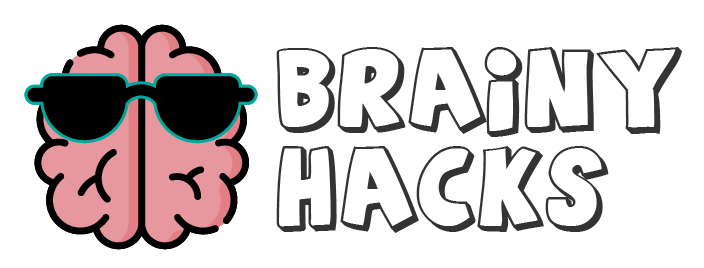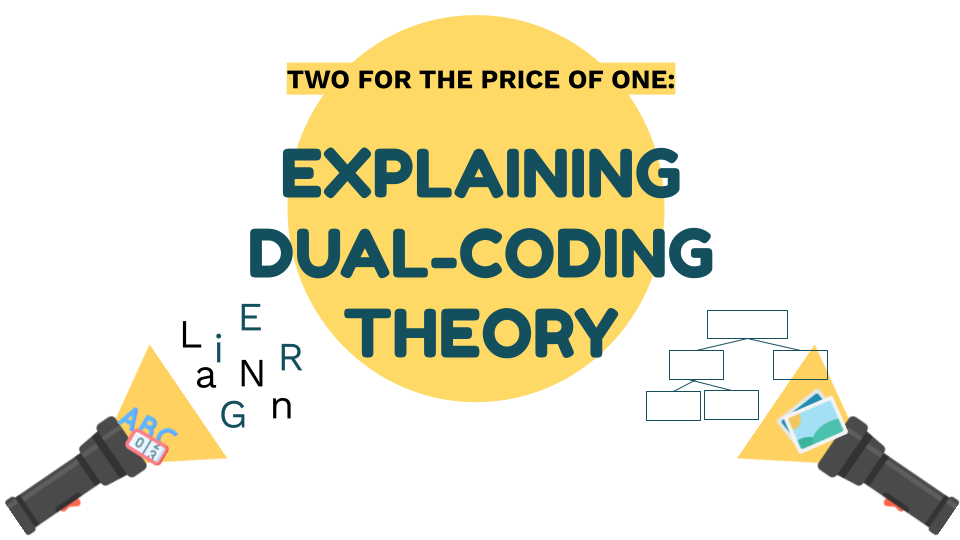Take a look at this fascinating map; it’s a visual feast, displaying the scheduled locations of Taylor Swift’s Eras tour across the United States. You’ll spot a timeline of events and even the talented artists joining her on this musical journey. But imagine if all this information was crammed into long, wordy paragraphs. Would you still find it as appealing, or remember more than five concert schedules and locations? If you’re nodding along, you’re in good company. Well, here’s where the enchanting world of dual coding steps in. It’s like a magician’s wand, turning a data overload into a memorable experience in just one swish and a spell. So, hang on tight, and discover how dual-coding can effortlessly transform how we learn and remember things!
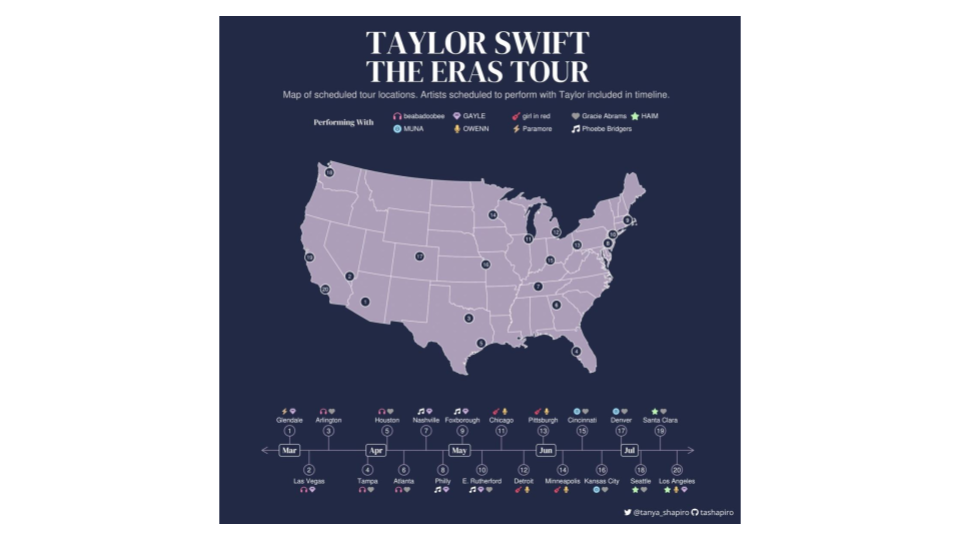
Dual-coding theory: What is it?
Dual coding is like giving your brain a superpower boost. Imagine your brain as a superhero with two trusty sidekicks – one is all about words, while the other is the visual whiz, loving images, diagrams, and anything that’s not words. Together, this duo makes understanding and remembering stuff a whole lot easier.
So, where does this dual coding idea come from? Well, it traces its roots back to Allan Paivio’s Dual Coding Theory, which he introduced in 1971. Allan had this brilliant notion that our minds can process words and visuals separately and simultaneously. He believed that when information is processed in the brain, activity occurs in two distinct subsystems – a verbal system specialized in processing language, and a nonverbal system specialized in non-linguistic imagery (Paivio, 1986; Schnotz, W. & Horz, H., 2010). See the figure below of Paivio’s Dual-coding theory.
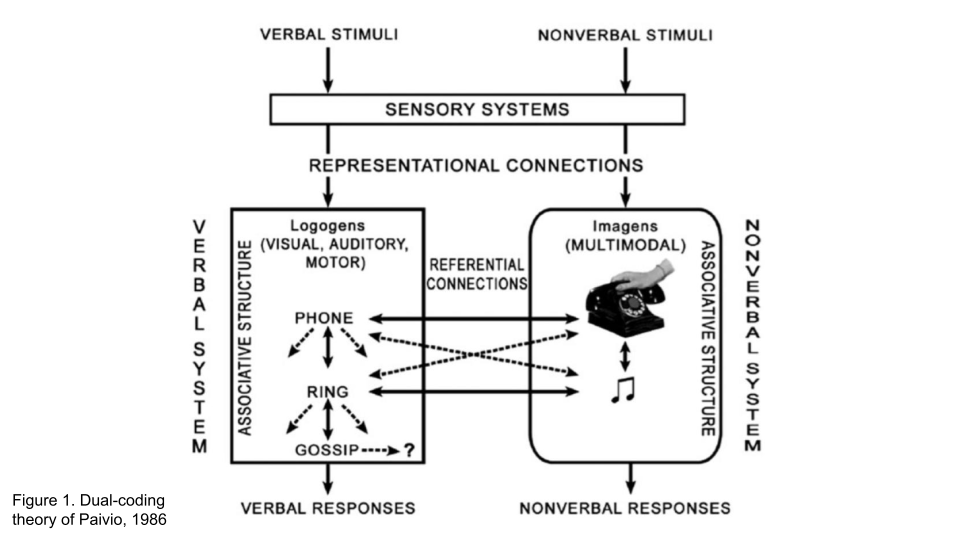
It’s like having two separate screens in your brain, one for words – say lyrics of a song, and one for pictures – say the representation of those lyrics, and they’re both hard at work. These two channels in your brain, the wordy one and the artsy one, are like best friends who sometimes team up to form powerful pairs of words and images. These pairings make your memory work even better by creating strong links in your mind. So, in a nutshell, dual coding enriches how you learn and remember things. Below is how we best remember the systems of the human body (right) and (left) the typical chunks of words in books.
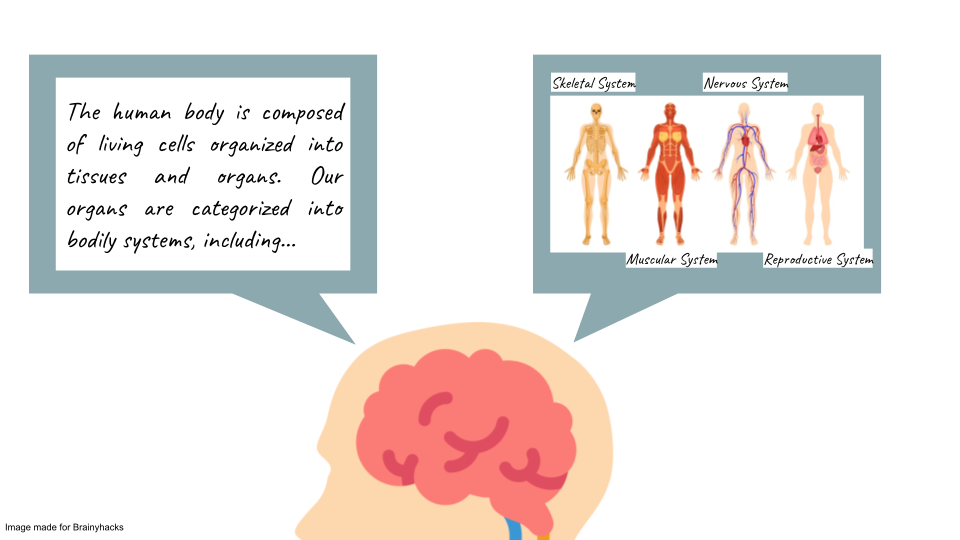
You know, we talked about working memory in our previous article, and guess what? Dual coding is like the superhero sidekick of memory, a combo that helps you remember stuff like a pro. Check out our Retrieval Practice Explained article for more hacks in remembering.
Now, as a learning strategy, dual coding is all about mixing up your learning materials to make the info stick. It’s like blending words with visuals or audio-visual stuff. Think diagrams showing body parts (like the example above), the butterfly’s life cycle, or presenting the company structure. And infographics? They’re great for showing off a famous person’s achievements or the benefits of recycling, and even a company’s monthly report. Plus, it’s super handy for timelines, whether you’re studying the presidents of the United States or the Americans’ contributions to World War II. Maps, too – they’re perfect for connecting cities to continents.
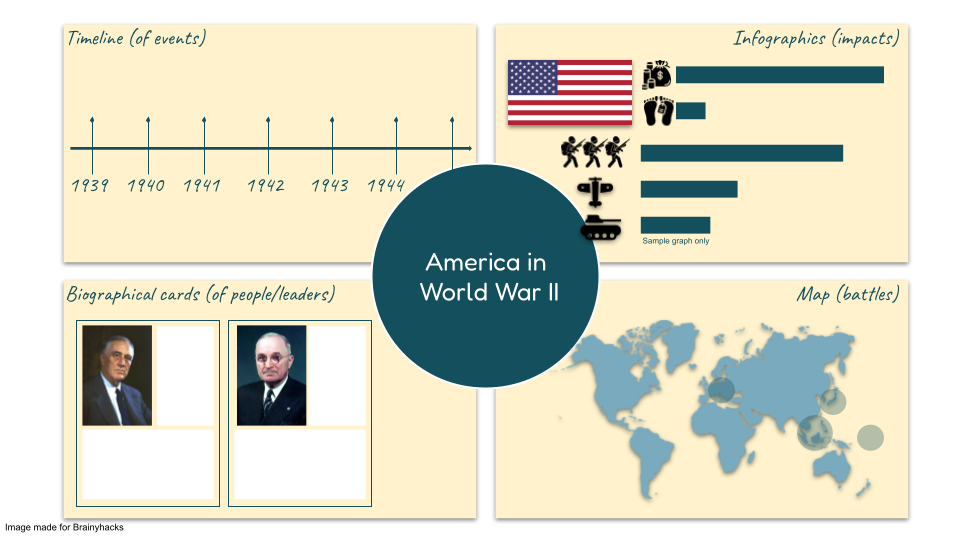
The thing is, if you’re just listening to a speaker explain things, your memory might not hold up, especially if you get distracted. So, dual coding is your secret weapon to boost your memory game and remember what you’re learning. Cool, right?
Synchronously or Simultaneously?
So, here’s the deal with dual coding: Some folks take it to mean that you always need to cram visual and verbal stuff into your learning materials, no matter if they actually help or not. But that’s a bit like overloading your plate at a buffet – it can leave you feeling stuffed, and not in a good way. It’s like reading two separate materials at once. It’s inefficient and can make your brain go “Whoa, too much!” Cognitive psychologists believe throwing too much information at learners all at once is like tossing them into an info hurricane. They’re struggling to process it all, which can do more harm than good.
Dual coding is all about being smart with the info you use, as opposed to split-attention theory, which requires learners to split their attention between and mentally integrate multiple sources of information (Ayres & Sweller, 2014). Instead, it’s way better to bring different info sources together into one neat package. Think of it as creating a tag team of visuals and words, working together to make info stick, like the Eras tour map where locations, timelines and bands are presented in one. All the info shown is relevant and is focused on the tour.
Dual-coding in action: How is it applied?
So, how can we make it all click when we’re taking in information? Well, here’s a cool approach: picture this – you’re in class, and your Literature teacher shows you an image while explaining it out loud at the same time.
You’re processing the visual (the images of Peter and Wendy) and the verbal (The Cardigan lyrics to Taylor Swift’s song) all at once. And guess what? There’s a bonus – your teacher can help you get the hang of tricky words.
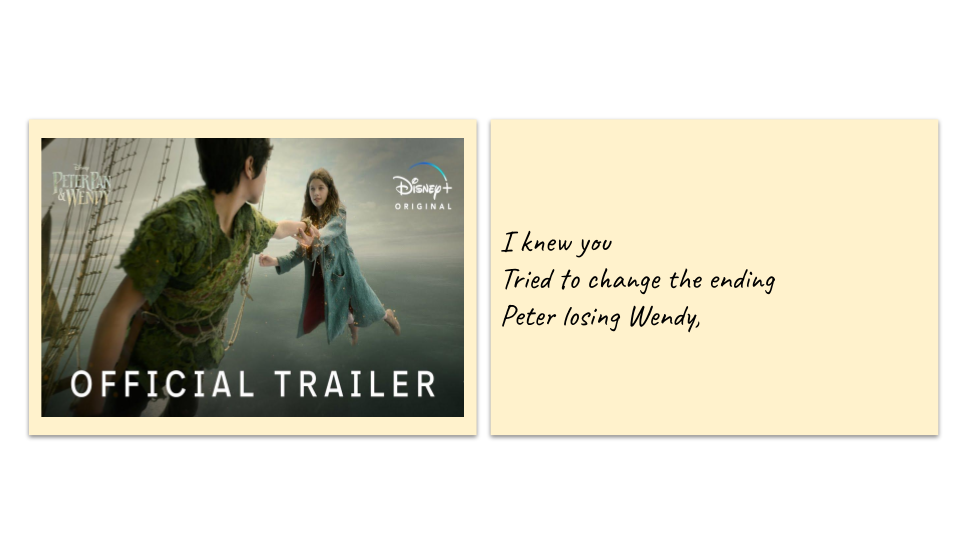
This way, experts believe, you’ve got not one, but two superhero ways to understand and remember stuff. When you use this trick, teachers often ask you to:
1. Check out the visuals and compare them with the words.
2. Look at the visuals again and explain them in your own words.
3. Get creative and draw or recreate the material based on how you see it.
But there’s another approach, too. Some teachers use a visualizer, a fancy tool that slowly unveils info as they explain. They can even adjust their explanation if you’re scratching your head. However, not everyone has the art skills of a Renaissance painter, and sometimes handwriting can be as clear as a doctor’s prescription. That’s where animated presentations come to the rescue. They’re like a smooth ride when it comes to explanations, making things crystal clear.
So, there you have it! These examples make it clear that there’s no magic formula for applying dual coding theory. It’s like cooking – you gotta use the right ingredients and tools for each dish. The way a teacher teaches really depends on what they’re teaching and what they’ve got to work with. For more ways of organizing ideas for better retention, watch this Ted Talk by Oliver Caviglioli.
Now, wouldn’t it be cool to put these dual coding tricks to the test by creating infographics about Taylor Swift making it onto Forbes’ billionaire list? Imagine walking into her journey, using visuals and words to tell the story. It’s all about taking that fascinating journey and sharing it in a way that truly sticks in your reader’s mind.
So, as you embark on your own adventures in teaching and learning, remember that dual coding is like having an extra card up your sleeve, a way to make knowledge memorable and fun. Go ahead and give it a whirl – you’ll be amazed at the results!
References:
- Ayres, P. & Sweller, J. (2014). The split-attention principle in multimedia learning. Cambridge University Press. https://www.cambridge.org/core/books/abs/cambridge-handbook-of-multimedia-learning/splitattention-principle-in-multimedia-learning/BB73E51FE9D82949C143ED4879A11C0C
- Paivio, A. (1986). Psychological processes in the comprehension of metaphor. Metaphor and Thought, 163. https://ci.nii.ac.jp/naid/10029347183/
- Schnotz, W. & Horz, H. (2010). International Encyclopedia of Education (3rd edition). https://www.sciencedirect.com/topics/neuroscience/dual-coding-theory
